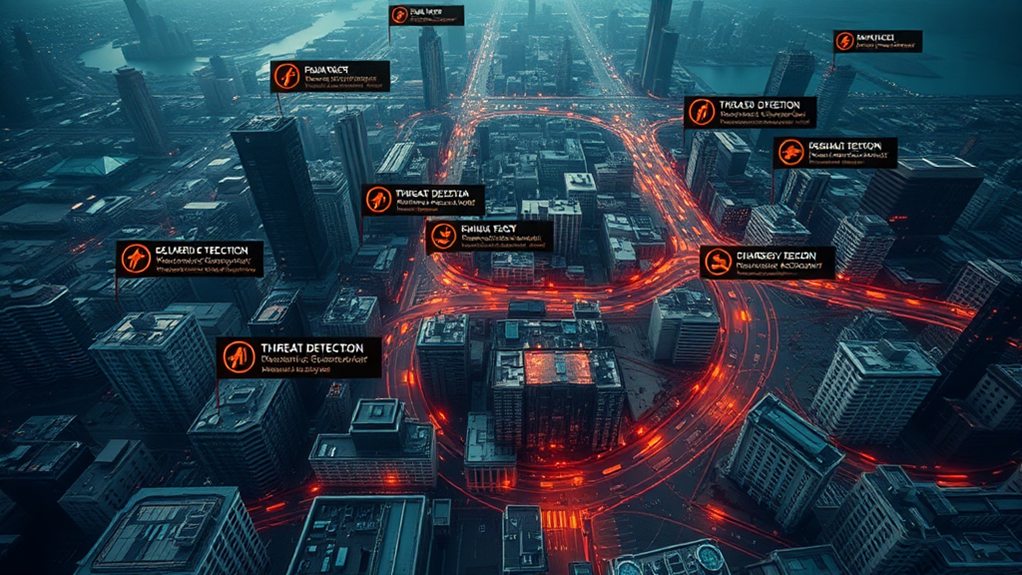Navigating Threat-Assessed Environments
Maneuvering threat-assessed environments requires a strategic approach that synthesizes thorough risk analysis with heightened situational awareness. Professionals must continuously evaluate environmental dynamics, detect subtle behavioral cues, and maintain adaptive response protocols through methodical training. Key strategies involve meticulous terrain assessment, precise movement techniques, and rapid mental mapping that anticipate potential risks while preserving operational flexibility. Effective maneuvering demands a holistic approach that integrates mental preparedness, advanced observation skills, and the ability to transform uncertainty into manageable tactical considerations. The journey through complex environments reveals deeper insights for those prepared to listen and adapt.
Decoding Environmental Risks
While operational success hinges on thorough threat assessment, decoding environmental risks represents a critical initial phase in strategic planning. Understanding the complex landscape involves meticulously analyzing potential environmental hazards and political instability that could compromise mission objectives.
Skilled operatives must systematically evaluate terrain characteristics, local infrastructure vulnerabilities, and geopolitical tensions that might introduce unexpected challenges.
Comprehensive risk mapping requires deep contextual intelligence, transcending surface-level observations. By integrating local intelligence, historical conflict data, and real-time situational awareness, professionals can develop nuanced strategies that anticipate and mitigate potential threats.
This approach transforms environmental uncertainty from an unpredictable variable into a manageable, strategic consideration, enabling more precise operational decision-making and enhanced safety protocols.
Mastering Situational Perceptions
How do professionals transform environmental observation into a strategic advantage?
Mastering situational perceptions requires developing acute perceptual awareness that transcends ordinary observation.
Professionals train to detect subtle behavioral cues, understanding that every environment communicates critical information through minute details and human interactions.
Strategic Movement Protocols
Strategic Movement Protocols emerge as a direct extension of heightened situational awareness, transforming perceptual insights into deliberate, calculated navigation through complex environments.
Path selection becomes a critical skill, requiring operatives to analyze terrain, potential obstacles, and concealment opportunities with precision and foresight.
Stealth techniques play a pivotal role in minimizing detection risks, emphasizing controlled movements that blend seamlessly with surrounding landscapes.
Professionals prioritize low-profile routes, leveraging environmental features like shadows, dense vegetation, and urban infrastructure to maintain operational anonymity.
Each movement is meticulously planned, balancing speed with discretion, ensuring continuous threat assessment and rapid adaptability.
Successful strategic movement demands an intricate dance of observation, anticipation, and calculated risk management, where every step represents a deliberate strategic decision.
Crisis Response Techniques
Crisis detonation represents a critical inflection point where preparation meets decisive action. Emergency preparedness transforms potential chaos into managed scenarios, enabling swift, calculated responses to emerging threats.
Effective threat mitigation demands a holistic approach that combines mental readiness, physical training, and strategic thinking.
Successful crisis response hinges on maintaining composure under pressure, systematically evaluating immediate risks, and executing pre-determined protocols with precision.
Operatives must rapidly assess environmental dynamics, identify potential escape routes, and make split-second decisions that prioritize personal safety and mission objectives.
The ability to remain calm, adapt quickly, and leverage situational awareness becomes paramount when unexpected challenges emerge.
Dynamic Exit Strategies
Escape vectors become lifelines in high-stakes environments where operational survival depends on fluid, adaptable extraction methodologies.
Dynamic exit strategies demand continuous threat reevaluation and precise adaptive planning, transforming potential vulnerabilities into strategic opportunities for safe disengagement.
Successful operatives understand that predetermined escape routes can quickly become compromised, necessitating immediate recalibration of extraction protocols.
This requires rapid mental mapping, evaluating real-time environmental shifts and potential alternate pathways.
Effective exit strategies are not static blueprints but living, breathing frameworks that evolve with emerging intelligence and situational dynamics.
The hallmark of exceptional operational mobility lies in maintaining composure while seamlessly shifting between contingency plans, ensuring personal safety remains the paramount objective in unpredictable terrain.
Final Thoughts
Maneuvering Threat-Assessed Environments
Decoding Environmental Risks
Strategic operational success demands thorough understanding of complex global landscapes. Threat assessment transcends traditional security paradigms, requiring multidimensional analytical frameworks that integrate geopolitical intelligence, environmental dynamics, and emerging risk vectors. Effective maneuvering begins with rigorous reconnaissance, systematically mapping potential challenges through meticulous data collection and nuanced interpretation.
Mastering Situational Perceptions
Situational awareness represents a critical operational competency. Advanced perception techniques involve synthesizing disparate information streams, recognizing subtle contextual shifts, and developing predictive threat models. Keen observational skills transform raw data into actionable intelligence, enabling preemptive strategic responses that mitigate potential risks before escalation.
Strategic Movement Protocols
Movement through challenging environments requires calculated, deliberate strategies. Ideal protocols emphasize flexibility, minimal visibility, and continuous adaptive assessment. Routes must be selected through thorough terrain analysis, considering political landscapes, infrastructural constraints, and potential interdiction points. Technical proficiency combines with strategic improvisation to guarantee operational mobility.
Crisis Response Techniques
Effective crisis management demands instantaneous decision-making capabilities. Robust response frameworks integrate rapid threat evaluation, immediate resource mobilization, and dynamic contingency implementation. Successful interventions balance calculated restraint with decisive action, leveraging extensive preparatory training and sophisticated communication networks to neutralize emerging challenges.
Dynamic Exit Strategies
Strategic withdrawal represents a sophisticated operational capability. Successful exit protocols prioritize preservation of operational integrity, personnel safety, and mission continuity. Thorough planning anticipates potential disruption scenarios, establishing multiple egress routes, communication fallback mechanisms, and adaptive contingency alternatives that maximize operational flexibility.
Conclusion:
Maneuvering threat-assessed environments requires sophisticated strategic intelligence, adaptive methodologies, and thorough preparatory frameworks. Successful operational engagement emerges from meticulous planning, dynamic situational awareness, and the capacity to transform potential vulnerabilities into strategic opportunities. Advanced operational capabilities fundamentally reshape risk management paradigms.







